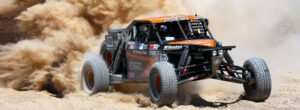How to choose a racing buggy
Racing buggy what is it
A racing buggy is a type of off-road vehicle designed for use in rough terrain and racing events. These vehicles typically have a lightweight, open-frame design and are equipped with powerful engines, large wheels and tires, and advanced suspension systems that allow them to navigate over bumpy and uneven terrain at high speeds.
Racing buggies are often used in off-road racing competitions such as desert racing, sand dune racing, and other types of off-road events. They can be powered by a variety of engines, including gasoline engines, diesel engines, and electric motors.
Some racing buggies are designed for solo drivers, while others are designed for teams of two or more drivers. They can vary in size and shape, but are generally compact and agile to allow for fast turns and quick acceleration.
How racing buggies appeared
Racing buggies originated from off-road vehicles used for recreational purposes, such as dune buggies and sand rails. These vehicles were designed to navigate rough terrain and were popular among outdoor enthusiasts in the 1960s and 1970s.
In the late 1970s, racing buggies began to emerge as a distinct motorsport. These buggies were modified versions of recreational off-road vehicles, designed specifically for racing on closed circuits or off-road courses.
The first organized racing events for buggies were held in the United States, with the National Off Road Racing Association (NORRA) holding the first organized off-road race in 1967. As the sport grew in popularity, more organized events were held, leading to the creation of dedicated off-road racing series like SCORE International and the Best in the Desert.
In the 1980s, buggy racing began to expand beyond the United States, with the European Off Road Championship and the FIA Cross Country Rally World Cup being established. Today, racing buggies are used in a variety of off-road racing events, including short course racing, desert racing, and rally racing.
How to choose a racing buggy
Choosing a racing buggy depends on several factors, including your skill level, the terrain you’ll be racing on, your budget, and personal preferences. Here are some general tips to keep in mind:
- Consider your skill level: If you’re new to racing buggies, you’ll want to choose a buggy that’s easy to handle and forgiving. A buggy with a lower top speed and more stable handling characteristics may be a good choice for beginners.
- Terrain: The type of terrain you’ll be racing on will have a significant impact on the type of buggy you should choose. If you’ll be racing on smooth, flat tracks, you may want a buggy with lower suspension and stiffer shocks. If you’ll be racing on rough or uneven terrain, you’ll want a buggy with more suspension travel and softer shocks.
- Budget: Racing buggies can range in price from a few hundred dollars to several thousand dollars. Determine your budget before you start shopping to avoid overspending.
- Personal preferences: Consider factors like the brand, color, and style of the buggy. These factors won’t necessarily impact performance, but they can affect your overall enjoyment of the vehicle.
- Research: Do some research on the different brands and models of racing buggies available. Look for reviews and ratings from other racers to help you make an informed decision.
Ultimately, the best way to choose a racing buggy is to test drive a few different models and see which one feels the most comfortable and suits your needs the best.
Cross-country
A cross-country racing buggy is a type of vehicle designed for off-road racing. It typically has a lightweight, rugged frame and large, high-traction tires to handle the rough terrain. The buggy may be powered by a gasoline engine, electric motor, or hybrid powertrain.
Cross-country racing buggies are built to be fast and maneuverable, with a low center of gravity to help them stay stable while cornering. They often have long suspension travel to absorb bumps and jumps, and powerful brakes to bring the vehicle to a stop quickly.
These vehicles are used in various types of off-road racing, including desert racing, rallycross, and off-road endurance races. They may be custom-built by racing teams or purchased from manufacturers specializing in off-road racing vehicles.
Safety is a top priority in cross-country racing, and many buggies are equipped with roll cages, harnesses, and other safety features to protect the driver and passenger in case of a crash.
Material of manufacture
Racing buggies can be made from a variety of materials depending on the specific design and intended use. Some common materials used in the manufacture of racing buggies include:
- Steel: Steel is a popular material for the frame of a racing buggy due to its strength and durability. It is often used for the main chassis and roll cage.
- Aluminum: Aluminum is a lightweight metal that is often used in the construction of racing buggies to reduce weight and improve performance. It is commonly used for suspension components, wheels, and body panels.
- Carbon fiber: Carbon fiber is a high-strength, lightweight material that is often used in the construction of racing buggies to reduce weight and increase stiffness. It is commonly used for body panels, suspension components, and other structural parts.
- Fiberglass: Fiberglass is a composite material that is commonly used in the manufacture of racing buggies for its strength and durability. It is often used for body panels, hoods, and other exterior components.
- Plastics: Various types of plastics are used in the manufacture of racing buggies, including polyethylene, polypropylene, and ABS. These materials buydo.eu are often used for interior components, such as seats and dashboard panels.
The specific material used in the manufacture of a racing buggy depends on various factors such as the desired performance, durability, and cost. A well-designed racing buggy will typically use a combination of these materials to achieve the best balance of performance, strength, and weight.

Choosing engine
Choosing a racing buggy engine can be a complex decision that requires consideration of several factors such as power, durability, fuel efficiency, and cost. Here are some tips to help you make an informed decision:
- Determine your racing needs: Before choosing an engine, it’s important to consider the type of racing you will be doing. This will help you choose an engine that is suitable for the terrain, track, and distance of the race.
- Check the power output: The power output of an engine is a critical factor to consider when selecting a racing buggy engine. The higher the power output, the better the performance of your buggy. However, higher power output also means higher fuel consumption and maintenance costs.
- Look for durability: Durability is another key factor to consider when choosing a racing buggy engine. It’s important to select an engine that can withstand the rigors of racing and the high temperatures associated with high-performance driving.
- Consider fuel efficiency: Fuel efficiency is a critical consideration when selecting a racing buggy engine. The more fuel-efficient the engine, the less time you’ll need to spend refueling during a race. This can be a significant advantage in endurance races.
- Evaluate the cost: Cost is a crucial factor to consider when choosing a racing buggy engine. Generally, higher-performance engines tend to be more expensive, so it’s important to balance your need for performance with your budget.
- Seek expert advice: It’s always a good idea to seek advice from experts in the racing industry. They can provide valuable insights into the best engine options for your racing buggy and help you make an informed decision.
The best buggies
The best racing buggies depend on personal preference and racing style, but here are some of the top options available:
- Traxxas XO-1: This buggy is known for its impressive speed, with a top speed of over 100 mph. It’s also highly customizable, allowing racers to make modifications to suit their preferences.
- Losi 8IGHT-XE Elite: This buggy is a popular choice among professional racers, thanks to its high-performance capabilities and durable design. It also has a range of features designed to optimize handling and speed on the track.
- Team Associated RC8B3.2e: This racing buggy offers a balance of speed and handling, with a focus on precision and control. It’s also known for its durability and reliability, making it a popular choice among racers.
- Tekno RC EB48 2.0: This buggy is designed for rough and uneven terrain, with an emphasis on stability and suspension. It also has a range of customization options, allowing racers to adjust the handling and performance to their liking.
- Kyosho Inferno MP9e TKI4: This buggy is known for its speed and agility, with a focus on responsive handling and acceleration. It’s also designed to be easy to maintain and repair, making it a popular choice among amateur racers.
Ultimately, the best racing buggy for you will depend on your personal preferences, racing style, and budget. It’s important to do your research and test drive different options to find the one that’s right for you.
Advantages and disadvantages
Advantages of racing buggies:
- Versatile: Racing buggies can be used in a variety of off-road racing events, making them a versatile option for racers who want to participate in different types of races.
- High-performance: Racing buggies are designed for high-performance racing, with features like powerful engines, advanced suspension systems, and lightweight materials.
- Customizable: Many racing buggies are highly customizable, allowing racers to make modifications to improve performance, handling, and other factors.
- Exciting: Racing buggies provide an exciting and adrenaline-fueled racing experience, with high speeds, jumps, and other challenging obstacles.
Disadvantages of racing buggies:
- Expensive: Racing buggies can be expensive, especially if you want a high-performance model. The cost of customization and maintenance can also add up over time.
- Limited use: Racing buggies are designed specifically for off-road racing and aren’t suitable for everyday use or commuting.
- High maintenance: Racing buggies require regular maintenance to keep them in top condition, including regular oil changes, suspension adjustments, and other repairs.
- Safety risks: Racing buggies can be dangerous if not used properly, with risks like crashes, rollovers, and other accidents. Racers need to take proper safety precautions and wear appropriate safety gear to minimize the risks.
Related Posts
Leave a Reply Cancel reply
You must be logged in to post a comment.




